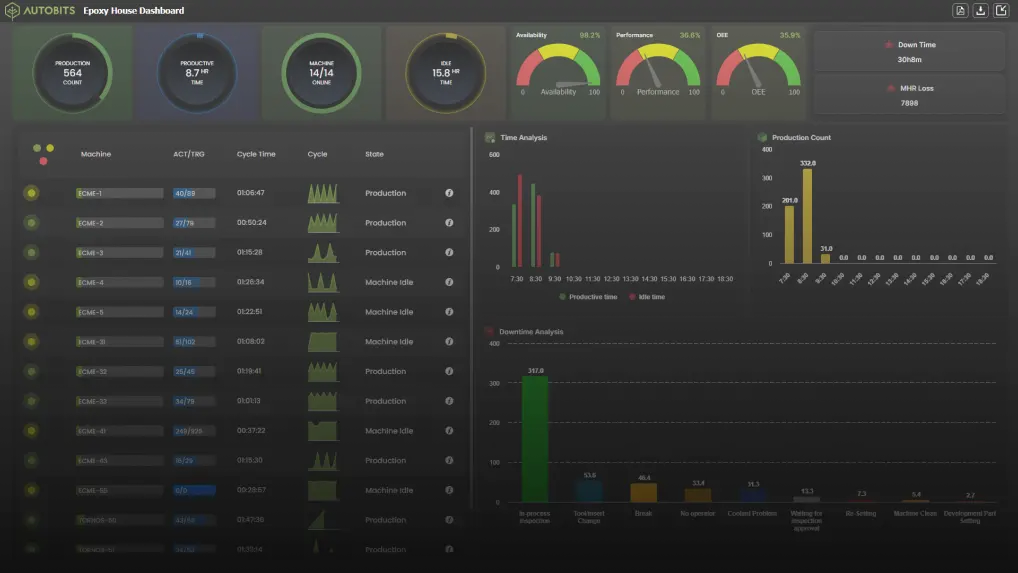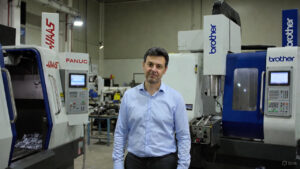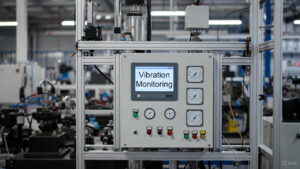Every investment must be justified in today’s competitive manufacturing and industrial landscape. When considering new technology, particularly something as impactful as machine monitoring software, the question inevitably arises: “What’s the ROI of machine monitoring software?” It’s a valid question and one that innovative businesses are increasingly asking. As we’ll explore, the answer is often substantial and directly tied to improving your operational efficiency and, ultimately, your profitability.
Beyond the Buzzwords: Understanding the True Value
Machine monitoring software isn’t just about fancy dashboards or real-time data feeds. It’s a strategic tool designed to provide deep insights into your production processes, machine health, and overall factory performance. By capturing and analyzing data from your equipment, raw information can be transformed into actionable intelligence. This intelligence is where the real financial benefits lie.
Read: The Power of Real-time Production Monitoring Software: Beyond Just Counting Parts
Unpacking the Cost of Not Monitoring
Before we delve into the positive returns, let’s consider the hidden cost of machine monitoring software – or rather, the cost of not having it. These often-overlooked expenses can significantly erode your profits:
- Unplanned Downtime is the most significant cost. Every minute a machine is down is a minute of lost production, revenue, and potentially missed deadlines. This also incurs costs for emergency repairs, overtime, and expedited shipping for replacement parts.
- Suboptimal Performance: Machines running below optimal efficiency due to minor issues, slow changeovers, or unnecessary idle time. This “hidden factory” can be a significant drain on productivity.
- Excessive Energy Consumption: Inefficient operations often consume more energy than necessary, leading to higher utility bills.
- Scrap and Rework: Defects caused by machine malfunctions or inconsistent processes result in wasted materials and labor.
- High Maintenance Costs: Reactive maintenance, waiting for a breakdown, is almost always more expensive than planned, proactive interventions. Excessive preventive maintenance can also lead to unnecessary part replacements.
- Labor Inefficiency: Maintenance staff spend time diagnosing issues rather than performing proactive tasks, or operators manually track production data.
These hidden costs quickly add up, often dwarfing the initial cost of machine monitoring software.
How Machine Monitoring Software Drives Financial Benefits
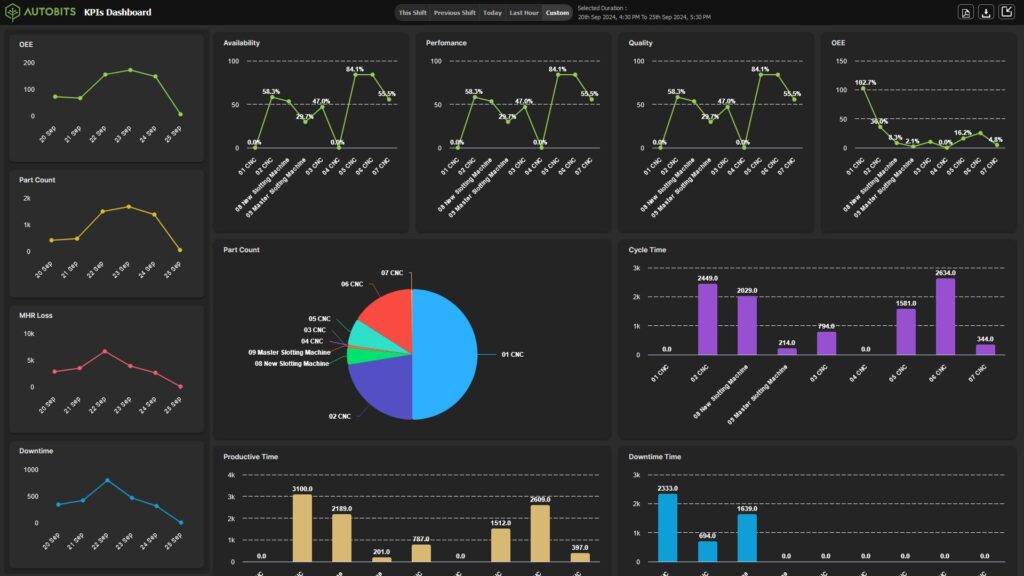
Now, let’s turn our attention to the tangible benefits of machine monitoring software that directly contribute to a positive ROI:
Reduced Unplanned Downtime:
This is arguably the most significant financial win. The software provides early warnings of impending failures by leveraging machine data analytics (e.g., vibration, temperature, current, cycle times). This allows for planned maintenance during off-hours, minimizing production interruptions and avoiding costly emergency repairs.
Example: A sensor detects abnormal vibrations in a critical motor. Maintenance is scheduled for the weekend, preventing a mid-week breakdown that would have halted production for 8 hours and cost $X per hour in lost revenue.
Increased Overall Equipment Effectiveness (OEE):
Machine monitoring provides real-time OEE metrics, highlighting bottlenecks, slowdowns, and areas for improvement. By optimizing cycle times, reducing idle time, and improving quality, you get more output from your existing assets.
Example: Analyzing data reveals that a machine frequently idles for 30 minutes after each batch. Based on this insight, implementing automated batch changeovers increases daily output by 5%, leading to significant revenue gains.
Read: What is OEE in Manufacturing? | Understanding Overall Equipment Effectiveness
Optimized Maintenance Operations:
Moving from reactive to proactive and even predictive maintenance, maintenance teams can prioritize work based on actual machine conditions rather than arbitrary schedules. This reduces unnecessary preventive maintenance, extends asset life, and lowers inventory costs for spare parts.
Example: Instead of replacing bearings every 6 months, data shows they are healthy for 9 months. This saves the cost of three bearing replacements per year per machine over its lifespan.
Improved Energy Efficiency:
You can optimize energy consumption by identifying periods of unnecessary machine operation or inefficient performance.
Example: Monitoring reveals that machines are left on overnight when not in use. Implementing automated shutdowns based on production schedules reduces energy bills by 10%.

Enhanced Production Quality and Reduced Scrap:
Consistent machine performance, guided by real-time data, leads to fewer defects and less rework.
Example: Deviations in pressure or temperature are immediately flagged, preventing a batch of faulty products before significant material is wasted.
Better Resource Utilization:
Machine monitoring frees operators and supervisors from manual data collection, allowing them to focus on higher-value tasks. Maintenance technicians can spend less time diagnosing and more time fixing.
Calculating the ROI of Machine Monitoring Software
To truly prove the value, you need to calculate the ROI of machine monitoring software. Here’s a simplified framework:
ROI=Cost of Investment(Total Financial Benefits – Cost of Investment)×100%
1. Calculate the Cost of Investment:
- Software subscription/license fees
- Hardware (sensors, gateways)
- Installation costs
- Training costs
- Ongoing maintenance/support
2. Quantify Financial Benefits:
- Cost Savings from Reduced Downtime: (Average hourly cost of Downtime) x (Hours of Downtime saved)
- Increased Production Revenue: (Increased output due to OEE improvements) x (Revenue per unit)
- Maintenance Cost Savings: (Savings from optimized maintenance, reduced parts, and less overtime)
- Energy Savings: (Reduced energy consumption) x (Cost per unit of energy)
- Reduced Scrap/Rework: (Value of materials and labor saved)
Gathering historical data is crucial here to establish a baseline. Once the machine monitoring system is in place, compare the “before” numbers to the “after” numbers.
The Investment That Pays for Itself
While the upfront cost of machine monitoring software might seem like a barrier, the rapid and substantial returns often make it one of the most impactful investments a manufacturing company can make; many businesses report seeing a positive ROI within months, not years, as the system quickly uncovers inefficiencies and prevents costly breakdowns. It’s not just about spending money; it’s about strategically investing in a solution that empowers you to make data-driven decisions, optimize your operations, and, ultimately, bolster your bottom line.
You move beyond guesswork into precision, predictability, and profound profitability by embracing machine data analytics.
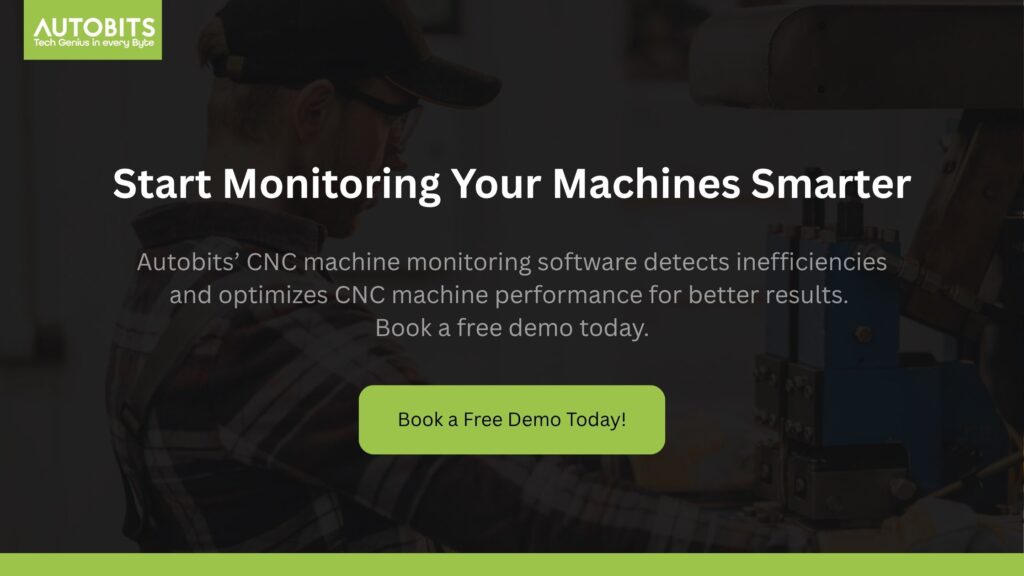
Frequently Asked Questions
What is the average ROI of machine monitoring software?
While specific ROI varies greatly depending on the industry, company size, and existing inefficiencies, many companies report a positive ROI within 6-18 months. Savings from reduced Downtime alone can justify the investment very quickly.
What are the most significant cost savings directly attributed to machine monitoring?
The most significant cost savings typically come from preventing unplanned Downtime, optimizing maintenance schedules (reducing both over-maintenance and reactive repairs), and improving overall equipment effectiveness (OEE), which leads to increased production capacity.
Is the “cost of machine monitoring software” solely the purchase price?
No. The cost includes the software license/subscription, necessary hardware (sensors, gateways), installation, initial setup, and ongoing training and support. It’s crucial to consider all these factors when calculating your total investment.
How does machine data analytics contribute to ROI?
Machine data analytics transforms raw sensor data into actionable insights. Analyzing trends, anomalies, and performance metrics identifies inefficiencies, predicts potential failures, and guides optimized decision-making for production and maintenance, directly contributing to cost savings and revenue growth.
What kind of companies benefit most from machine monitoring software?
Companies with high-value machinery, complex production processes, tight production schedules, or high costs associated with Downtime (e.g., automotive, aerospace, food and beverage, pharmaceuticals, heavy manufacturing) stand to gain the most significant ROI from machine monitoring software.


